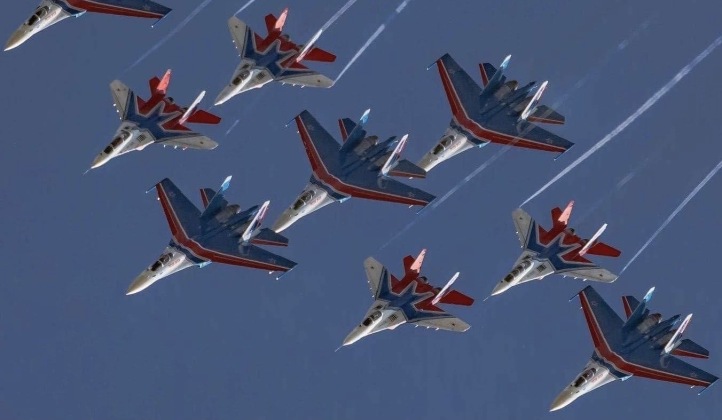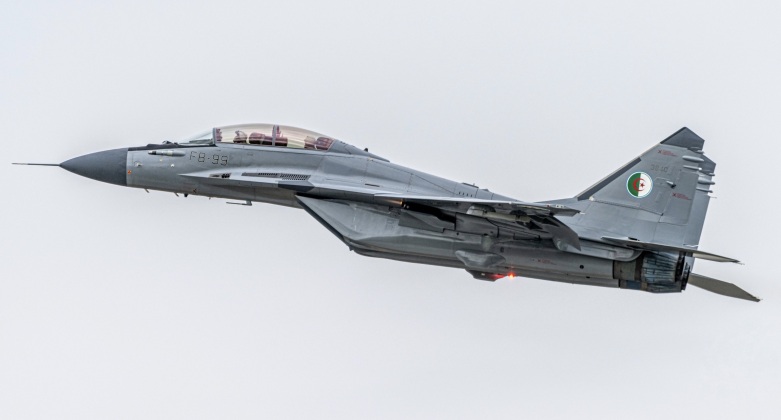News
Russia Makes Rare MiG-29 Deployment to Intercept Norwegian Spy Plane: Why the Once Venerated Fighter Seldom Appears Today
On August 23 the Russian Air Force made a rare deployment of a MiG-29 fighter to intercept a Norwegian Air Force P-8 Poseidon surveillance aircraft near Russian airspace over the Barents Sea. The Russian National Defence Management Centre reported regarding the incident: “On August 23, 2023, Russian airspace control systems detected an aerial target approaching the Russian state border over the waters of the Barents Sea. To identify the air target and prevent violation of the state Russian border, a MiG-29 fighter jet from the Northern Fleet’s standby air defence forces was scrambled.” The centre’s report elaborated that the MiG-29 flew in strict compliance with the international rules governing the use of airspace, adding: “as the Russian fighter jet approached, the foreign warplane turned away from the Russian Federation’s state border. A violation of the Russian Federation’s state border was prevented.” The deployment marks one of very few occasions when MiG-29s are reported to have been used for interception missions.

The MiG-29 was developed to form the backbone of the Soviet and allied Warsaw Pact fleets, providing a broad analogue to the American F-18 and F-16 as an advanced fourth generation fighter albeit with significant advantages in its flight performance, missile performance and its ability to deploy from frontline makeshift airfields. The fighter was the first in the world to benefit from a high off boresight targeting capability – meaning it could engage targets at extreme angles in visual range combat using R-73 missiles cued by helmet mounted sights. This capability was evaluated by NATO services after the Cold War to provide a truly overwhelming advantage, and still provides even older MiG-29 models with an edge over the West’s top air superiority fighter the F-22 which has yet to integrate helmet mounted sights of its own. MiG-29s tested in combat over Iraq and Yugoslavia notably lacked such targeting capabilities, however, meaning the aircraft did not have an opportunity to demonstrate its strong advantage in combat before Western defence sectors reverse engineered the technology from MiG-29 units acquired through East Germany after German reunification.

Despite its potency the MiG-29 has seen its role in the Russian Air Force rapidly diminish since the disintegration of the Soviet Union, and while approximately 800 were in service in the Soviet Air Force in 1991, with dozens more set to join the fleet every year, today Russia fields only around 110 – 64 percent of which are unmodernised. A primary reason for this was that the heavier and more capable Su-27 Flanker and its many derivatives, which were designed as heavier counterparts to the MiG-29, were considered more cost effective despite being far more expensive. This was in part due to their ability to patrol far wider areas with their longer ranges and larger radars. As a result the vast majority of interceptions of foreign aircraft by the Russian Air Force have been done by various derivatives of the Su-27, usually the original, the Su-30 or the Su-35, or otherwise in fewer cases by MiG-31 heavyweight interceptors.

Although the Russian Defence Ministry was widely reportedly in the early 2010s to be considering major upgrades to the MiG-29 fleet to bring the aircraft up to the ‘4+ generation’ MiG-29SMT standard, which would increase their range considerably, provide compatibility with new weapons, and integrate far superior avionics including phased array radars, this was never funded. MiG-29s are expected to continue to be phased out of frontline roles, although they will form the bulk of Russian Air Force reserve units into the 2030s, and potentially much longer, with hundreds of barely used airframes still in storage many of them unassembled. The fighter remains highly potent when modernised, although the baseline 1980s models are largely obsolete in their avionics, sensors and weaponry. With some enhancements MiG-29s from reserves, as well as much improved newly built MiG-29M and MiG-29K models, have been among the most popular Russian aircraft on export markets with clients in the last decade including Syria, India, Egypt, Algeria, Serbia and Mongolia.












